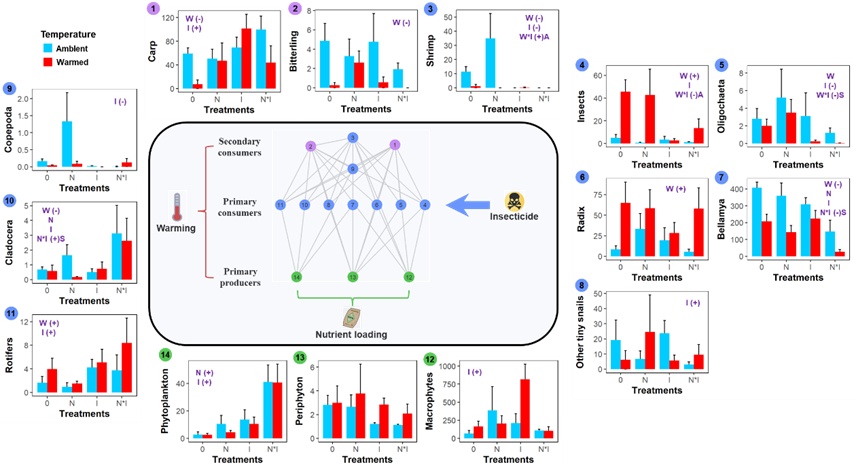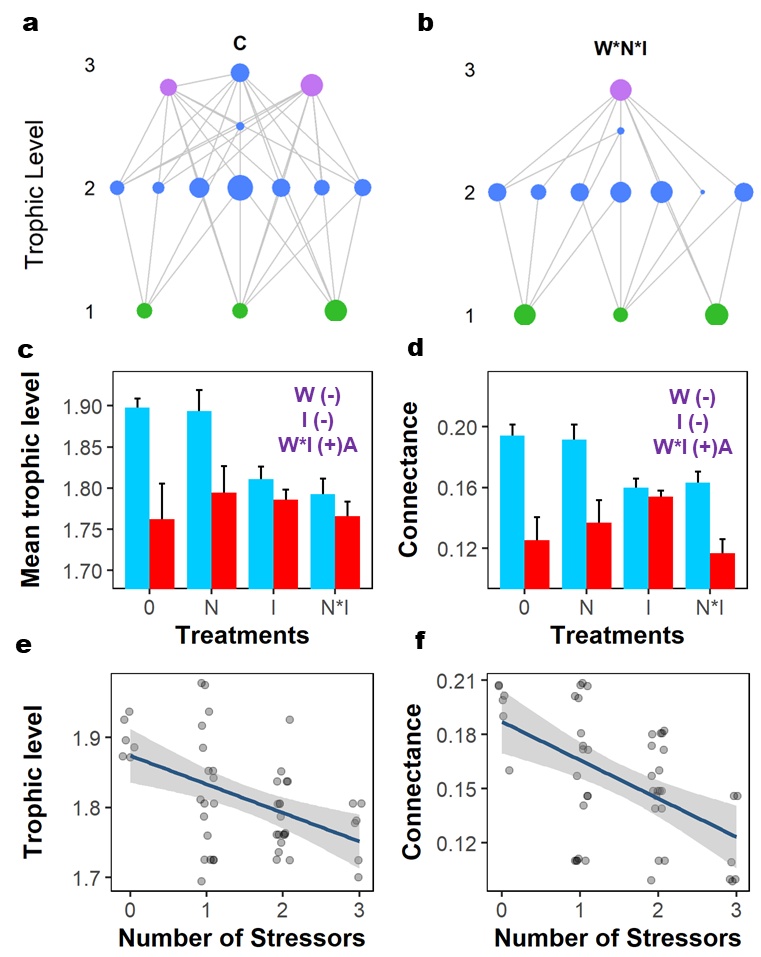
Newsroom
Researchers Reveal New Insights into Impact of Multiple Stressors on Freshwater Food Webs
Freshwater lakes and ponds are among the most biodiverse habitats on Earth, but they are increasingly subjected to multiple environmental pressures, including climate change, nutrient pollution, and pesticide contamination. Traditional research has often focused on single stressors, but in reality, ecosystems face a combination of stressors that can interact in complex ways, leading to either synergistic (amplifying) or antagonistic (dampening) effects. However, understanding how these interactions affect food web structure remains scant.
In a study published in Global Change Biology, Prof. XU Jun’s team from the Institute of Hydrobiology (IHB) of the Chinese Academy of Sciences (CAS), along with international partners from Germany, the UK, and Sweden, has shed new light on how multiple stressors interact to affect freshwater food webs. Their findings reveal that the combined effects of these stressors can simplify food web structures, shift energy flows, and potentially destabilize aquatic ecosystems.
In this study, the research team conducted a large-scale mesocosm experiment, simulating subtropical shallow lake ecosystems. Over ten months, they exposed 48 experimental systems to various combinations of warming, nutrient enrichment, and the insecticide imidacloprid. The study monitored changes across the entire food web, from primary producers like phytoplankton and submerged macrophytes to top predators such as fish and shrimp.
The results showed that each stressor individually affected different components of the food web. Warming significantly reduced the biomass and diversity of higher trophic level consumers, such as fish and shrimp, while nutrient loading and insecticide pollution promoted phytoplankton blooms. However, the combined effects of these stressors were more complex. Warming and insecticide pollution exhibited antagonistic interactions, where the presence of one stressor mitigated the effects of the other. In contrast, nutrient loading and insecticide pollution showed synergistic effects, exacerbating the negative impacts on the food web.
Furthermore, the researchers found that as the number of stressors increased, the food web structure became simpler, with fewer trophic links and a shift in energy flow from benthic to pelagic pathways. This shift increases the risk of ecosystem regime shifts, where clear-water states dominated by submerged plants transition to turbid states dominated by phytoplankton. Such changes can have profound implications for biodiversity and ecosystem services.
The findings highlight the importance of considering multiple stressors in environmental management and conservation efforts. Traditional single-stressor approaches may be insufficient, as the interactions between stressors can lead to unexpected outcomes. The researchers advocate for integrated, systemic strategies to mitigate the impacts of multiple stressors on freshwater ecosystems.
The international collaborating institutions include the Leibniz Institute of Freshwater Ecology and Inland Fisheries (IGB), the University of Oxford, Imperial College London, the University of Essex, and Lund University.
(Online: 05 March 2025)

Impacts of multiple stressors on different components of food webs (Image by IHB)

Multiple stressors simplify the food webs (Image by IHB)
(Editor: MA Yun)